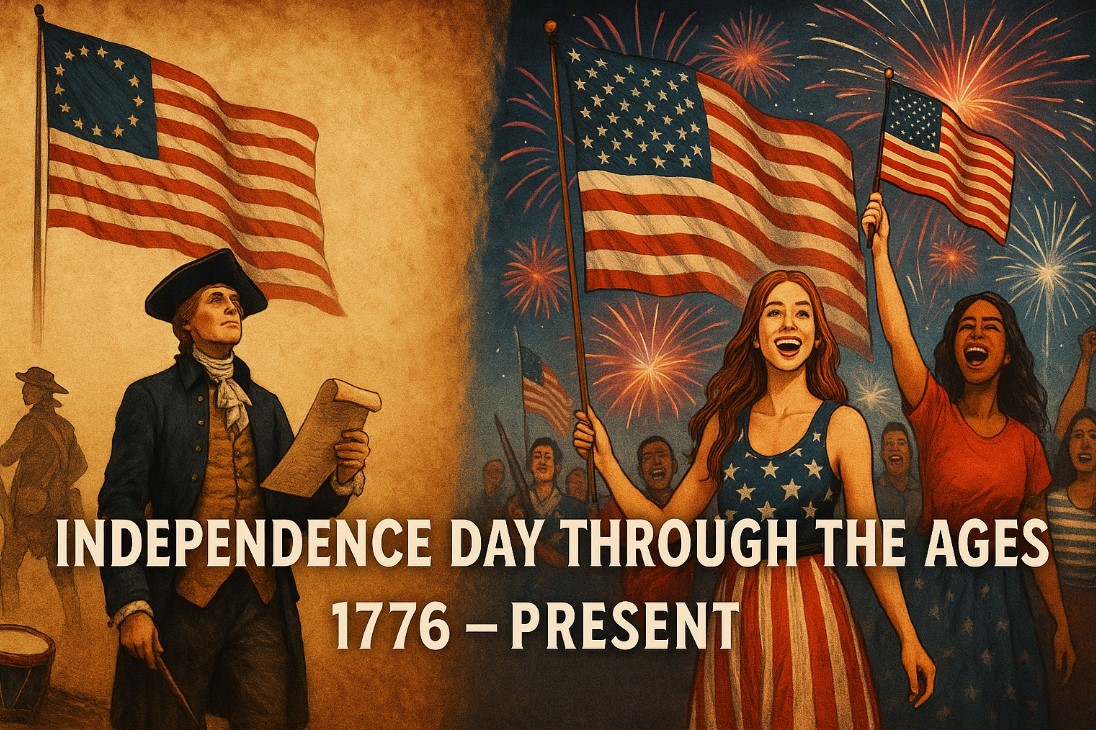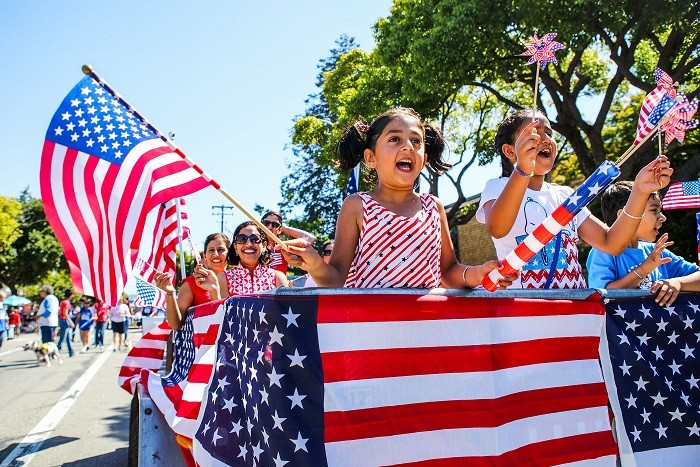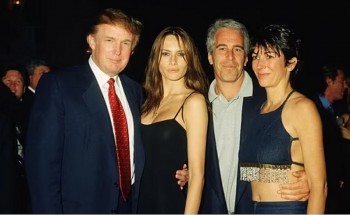Independence Day’s Unknown Heroes: The People History Left Behind
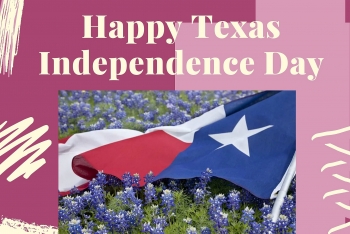 Texas Independence Day (March 2): History, Celebration Texas Independence Day (March 2): History, Celebration On March 2, 1836, Texas gained its independence from Mexico and created the Republic of Texas. |
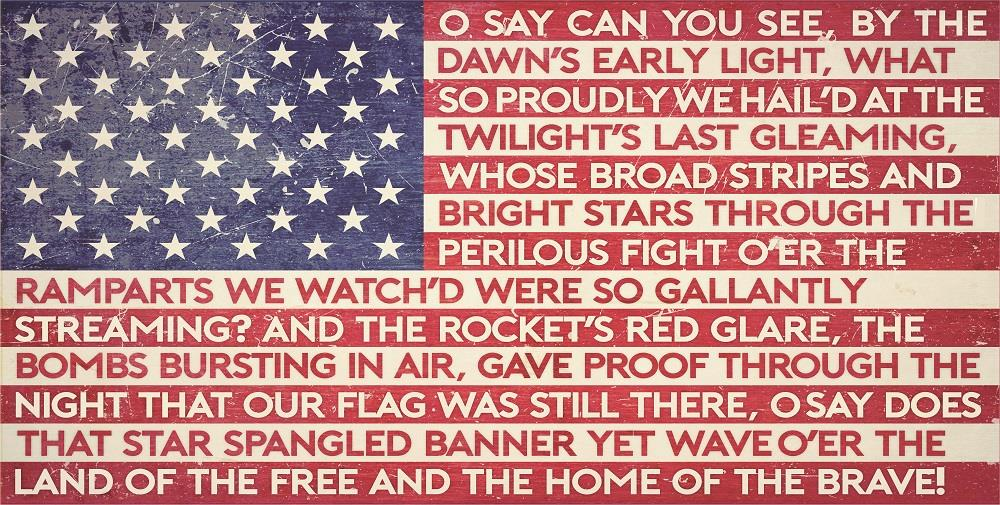 American National Anthem: Full Lyrics, History and Other Patriotic Songs American National Anthem: Full Lyrics, History and Other Patriotic Songs Check out full lyrics of "The Star-Spangled Banner" - US National Anthem and other patriotic songs. |
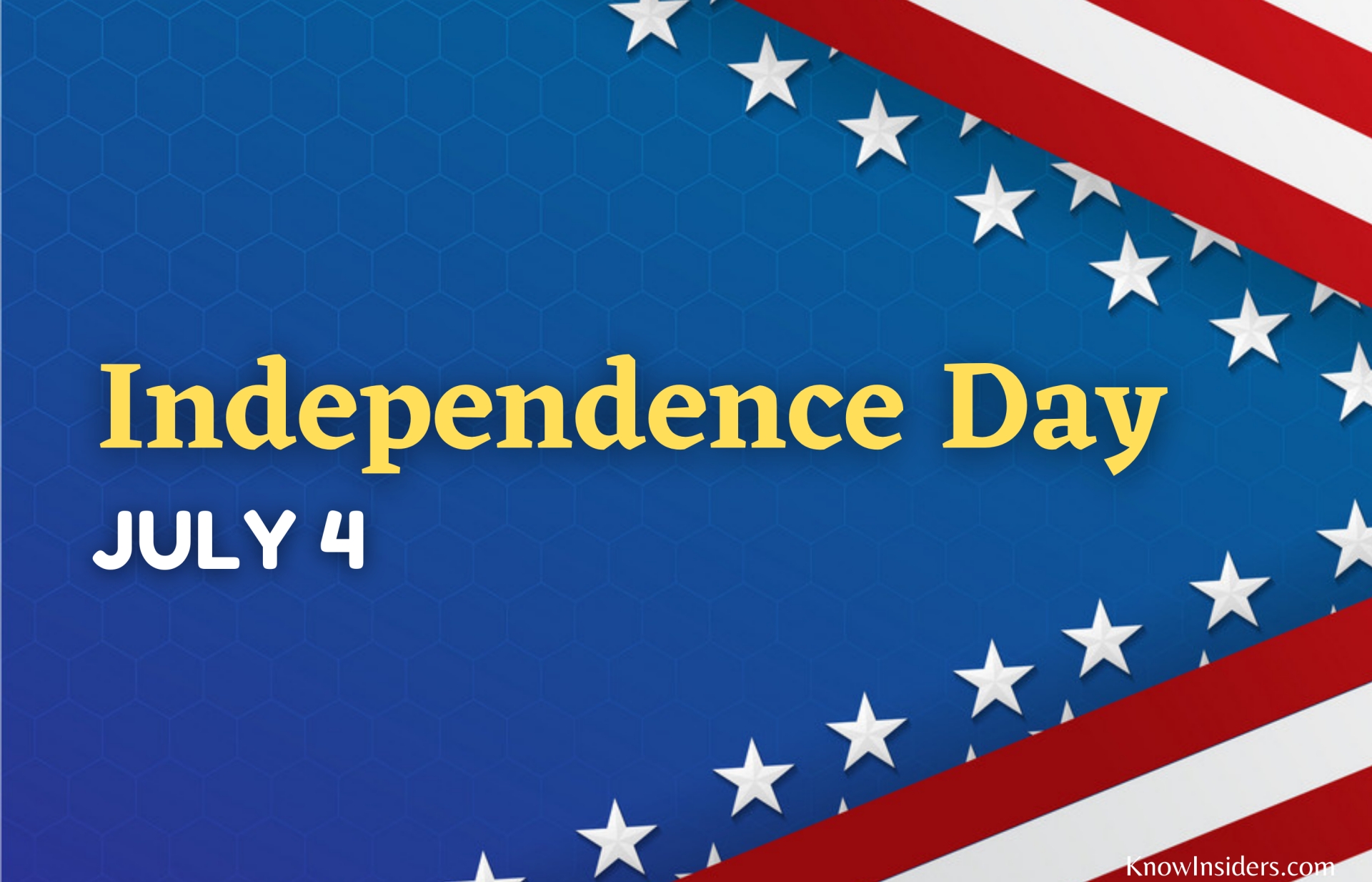 USA Independence Day (July 4): Timeline, Q & A and Facts USA Independence Day (July 4): Timeline, Q & A and Facts Independence Day is the most important holiday in the United States. Find out what it means and how it came to be. |
 Full List of National Days/Independence Days of Every Country: Dates and Celebrations Full List of National Days/Independence Days of Every Country: Dates and Celebrations A National Day is a date for a country to celebrate its nationhood. Common reasons for a certain day are the date on which a ... |
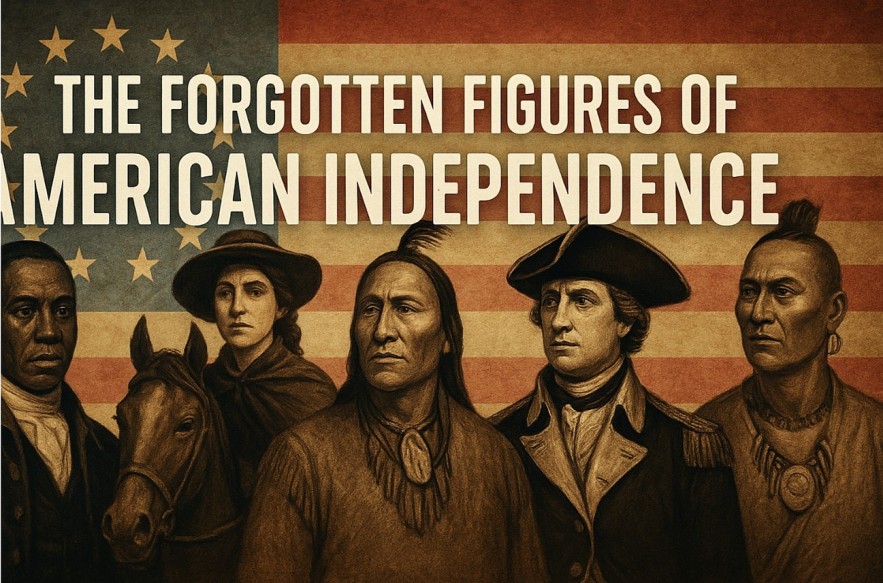 |
| The Forgotten Figures of American Independence |
Every July 4th, Americans commemorate their independence with fireworks, parades, and tributes to iconic figures like George Washington, Thomas Jefferson, and Benjamin Franklin. While these Founding Fathers were undeniably pivotal in shaping the United States, they were not the only ones fighting for freedom. Behind the scenes, in the shadows of textbooks and monuments, stood countless unsung heroes whose courage and contributions were equally vital.
This article shines a spotlight on those forgotten figures of the American Revolution—African Americans, women, Indigenous allies, and others who risked everything without the promise of fame. Their stories not only enrich our understanding of history but challenge the singular narrative often told about America’s founding.
James Armistead Lafayette: The Double Agent Who Changed the War
James Armistead Lafayette was an enslaved African American who became one of the most effective spies during the Revolutionary War. Under the direction of the Marquis de Lafayette, James posed as a runaway slave to infiltrate British camps. He gained the trust of generals such as Benedict Arnold and Lord Cornwallis, collecting invaluable intelligence and reporting troop movements, military strategies, and supply weaknesses.
His reports directly influenced the outcome of the Battle of Yorktown, the decisive American victory that ended the war. Washington and Lafayette coordinated a trap based on James's intelligence, leading to Cornwallis’s surrender.
Yet after the Revolution, James returned to slavery. He only gained his freedom years later when the Marquis de Lafayette petitioned on his behalf. In gratitude, James adopted "Lafayette" as his surname.
Today, his legacy serves as a powerful reminder that intelligence and courage come in all colors—and that the struggle for independence was deeply intertwined with the fight for personal liberty.
Sybil Ludington: The Teen Girl Who Rode Twice as Far as Paul Revere
At just 16 years old, Sybil Ludington made a heroic midnight ride on April 26, 1777, to alert American colonial forces that the British were advancing on Danbury, Connecticut. Her route spanned more than 40 miles—almost twice the distance of Paul Revere’s famed ride—and she rode alone, in the dead of night, through forests and rain.
She roused hundreds of local militia men, many of whom arrived in time to confront the British. Her brave act helped to mitigate the damage and forced the British to retreat after a fierce skirmish.
Sybil's story remained relatively obscure for decades, even though it represents the incredible bravery of young women during wartime. Today, statues and historical markers honor her legacy in New York, but she still doesn't receive the nationwide recognition she deserves.
Her story challenges the male-centric lens of Revolutionary history and proves that heroism isn't bound by age or gender.
The Oneida Nation: Indigenous Allies of the Revolution
While many Native American tribes allied with the British—believing the Crown would better protect their lands from American expansion—the Oneida Nation stood out. As members of the Iroquois Confederacy, the Oneida broke ranks with other tribes to side with the patriots.
They provided the Continental Army with food, scouts, and warriors. Their aid during the winter of 1777-78 at Valley Forge was crucial, helping to sustain George Washington’s troops during the army's most desperate days. Oneida warriors also fought bravely in the Battle of Oriskany, one of the war’s bloodiest engagements.
Their alliance fractured long-standing relationships within the Iroquois Confederacy and made the Oneida targets of British retaliation. After the war, despite their loyalty, the U.S. government failed to uphold many promises made to the tribe. The Oneida lost vast amounts of their ancestral land to settler encroachment.
The Oneida Nation's commitment is a powerful example of Indigenous agency, sacrifice, and betrayal in the American Revolution.
Deborah Sampson: The Woman Who Became a Soldier
In 1782, Deborah Sampson disguised herself as a man—using the alias "Robert Shurtliff"—to enlist in the 4th Massachusetts Regiment of the Continental Army. She was 21, tall, and physically capable of passing as male. For over 17 months, she marched, drilled, and fought alongside male soldiers.
She was wounded twice, once seriously in the leg. Fearing discovery, she removed one of the musket balls herself to avoid a medical exam. Her identity was eventually revealed when she fell ill and lost consciousness.
Despite the deception, Deborah was honorably discharged and later awarded a military pension—one of the few women to receive such recognition.
Her bravery not only defied gender roles but helped broaden the historical narrative of women in combat. In 1983, Massachusetts declared her its official state heroine.
Peter Salem: The Freedman Who Fought at Bunker Hill
Peter Salem was born into slavery in Massachusetts but earned his freedom to enlist in the Continental Army. At the Battle of Bunker Hill, he played a pivotal role. According to several accounts, he fired the shot that killed British Major John Pitcairn, causing British troops to falter.
Salem served for nearly five years, fighting at Saratoga, Monmouth, and Stony Point—a commitment unmatched by most soldiers.
Despite his valor, like many Black patriots, Salem lived in poverty after the war. He died in a poorly marked grave, though a monument in Framingham, MA now honors his memory.
Peter Salem symbolizes the thousands of African Americans who fought in the Revolution hoping for freedom, many of whom were later re-enslaved or denied compensation.
Joseph Brant (Thayendanegea): A Complex Allegiance
Joseph Brant, a Mohawk chief educated at a Christian school and fluent in English, was a British loyalist who led Native American forces in raids against American settlements. He believed the British victory would better protect Indigenous land and sovereignty.
Brant was not a mere pawn; he was a skilled strategist and diplomat. He met with King George III and British generals and was instrumental in organizing military campaigns in New York and Pennsylvania.
His actions were both feared and respected. After the war, Brant led his followers to Canada, founding a Mohawk settlement in Ontario. He also advocated for Native rights until his death.
Brant's legacy is complex: to Americans, he was an enemy; to his people, he was a protector. His story reminds us that revolution is rarely black and white.
Mercy Otis Warren: The Pen Behind the Revolution
Mercy Otis Warren was an intellectual powerhouse in a time when women were rarely allowed into political discourse. She wrote satirical plays that mocked British officials and stirred revolutionary fervor.
Her work influenced public opinion and leaders alike. After the war, she authored History of the Rise, Progress, and Termination of the American Revolution, a comprehensive and critical look at the nation’s founding.
Her correspondence with figures like John and Abigail Adams reveals her deep understanding of political theory and republican values.
Mercy's work proves that revolutions are fought not just with muskets, but with words.
Prince Whipple: Symbol of the Fight for Black Liberation
Prince Whipple was an African-born man enslaved by William Whipple, a signer of the Declaration of Independence. Prince served as his bodyguard and aide-de-camp, and fought in several key battles.
He is believed to be one of the Black men portrayed in Emanuel Leutze's famous painting Washington Crossing the Delaware. While the figure’s identity remains debated, Prince Whipple’s documented military service makes him a symbol of African American patriotism.
After the war, he became active in the early movement to abolish slavery. He petitioned for the rights of Black Americans and worked with other veterans to secure freedoms that the Revolution promised but did not deliver.
Conclusion: Redefining Heroism in the American Revolution
The American Revolution was not won by generals alone. It was a collective uprising powered by individuals from all walks of life—young women, enslaved men, Indigenous allies, intellectuals, and spies. These forgotten figures made invaluable contributions that history has too often overlooked.
As we celebrate Independence Day, let us honor not only the founding fathers but the diverse tapestry of heroes who made independence possible. True freedom acknowledges all those who fought for it.
By remembering them, we tell a fuller, richer, and more honest story of America's birth.
FAQs
1. Why are these figures considered "unsung heroes" of the American Revolution?
Because their contributions were significant but have been historically overlooked or underrepresented in mainstream accounts of the Revolutionary War.
2. Did African Americans play a major role in the fight for independence?
Yes. Around 5,000 African Americans served in the Continental Army, Navy, or militias, and many more supported the war effort as laborers, spies, and advocates.
3. Were there Native American tribes that supported the American cause?
Yes, notably the Oneida Nation. However, most Native tribes sided with the British due to concerns over land protection.
4. How did women contribute to the American Revolution?
Women served as spies, messengers, nurses, propagandists, and in rare cases like Deborah Sampson, even soldiers.
5. Why are these stories not commonly taught in schools?
Historical narratives have traditionally focused on prominent white male figures. Only recently has there been a push to include more diverse voices and stories in the retelling of American history.

